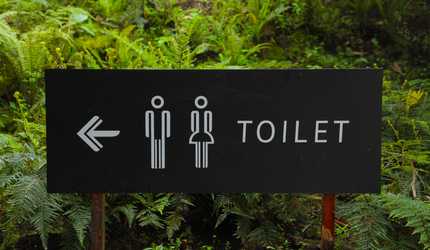How To Work Out My Current Fitness Level

Contents
When doing any sort of training or goal setting it is important to get a sense of your current fitness level.
This article will provide tips and techniques for assessing your fitness. It will cover a variety of methods, including cardio fitness tests, strength assessments, and flexibility evaluations. As well as providing guidance on how to use these tools to get a better understanding of your fitness level.
Whether you are just starting out or are an experienced runner looking to improve your performance, this information should get you on the right track to achieving your running goals.
Definition of ‘fitness level’: level of physical condition and endurance
A person’s ‘fitness level’ refers to the overall physical condition and endurance of an individual.
It is a measure of how well the body is able to perform various physical tasks, such as running a marathon or lifting weights.
Fitness level is determined by a variety of factors including:
- Genetics
- Diet
- Level of physical activity
Improving your fitness level can be achieved through regular exercise, proper nutrition, and other healthy lifestyle habits. It is important to regularly assess and maintain a healthy fitness level, as it can have a significant impact on your physical and mental well-being.
Importance of understanding fitness levels when training
Understanding your current fitness level is crucial when training for a race, whether it be a 10km or an ultra-marathon.
(If you are training for marathon, take a look at our guide for beginners).
It helps you set realistic goals and plan a training program that is appropriate for your body. If you underestimate your fitness level you may set goals that are too ambitious and risk injury or burnout.
On the other hand, if you overestimate your fitness level you may not push yourself enough and end up underperforming on race day.
Understanding your current fitness level can also help you track your progress and measure the effectiveness of your training. By regularly evaluating your fitness level you can see how your body is responding to your training, and make any necessary adjustments when needed.
These adjustments can help keep you motivated and focused on your training, and ultimately you will see improvements over time.
Do It Yourself Fitness Level Assessment
1.5 Mile Run – V02 Max
When it comes to training for a marathon, it is important to have a good understanding of your cardiovascular fitness. This will help you gauge your aerobic endurance. We find using the 1.5 mile test a great way of getting an initial reading on a fitness level.
The 1.5 mile run test is a popular method for assessing cardiovascular fitness. It is a pretty simple test that can be done with minimal equipment, making it an accessible option for runners of all levels. To complete the test, you will need to run as fast as you can for 1.5 miles (or 2.4 kilometres).
What you will need:
- Treadmill or standard running track
- Stopwatch
It is important to give it your all during the test, as your goal is to complete the distance in the shortest amount of time possible.
Warm Up
Before starting the test make sure to properly warm up. This will mean that you are less likely to hurt yourself, and more likely to get an accurate reading.
A good warm up routine could be:
- Arm circles clockwise and anti-clockwise for 30 seconds
- Hip opener for 30-seconds
- Frankenstein walk for 30-seconds
- Leg Crossover and Scorpion for 30 seconds
Take a look at the ‘Runners World Warm Up’ article for more information.
The Test
Start the stopwatch at the beginning of the run, and once the 1.5 miles have been completed, stop the timer.
Once you have completed the run, enter your details into the V02 Max calculator to get your V02 Max reading.
The formula if you want to do it for yourself is:
VO2 max (mL/min) = 132.853 – (0.0769 x weight in pounds) – (0.3877 x age) + (6.315 x gender) – (3.2649 x time in minutes) – (0.1565 x heart rate at the end of the test).
To use this formula, you will need to know your weight in pounds, age, gender (1 for male, 0 for female), time in minutes to complete the 1.5 mile run, and your heart rate at the end of the test.
Why is V02 Max Important for Marathon Runners?
The VO2 max is the maximum amount of oxygen that your body is able to use during exercise. It is a good indicator of endurance. A higher VO2 max is generally associated with better cardiovascular fitness and a greater ability to perform endurance activities.
Having a high VO2 max generally means runners recover more quickly during their training and races. When the body is able to use oxygen efficiently, it is able to clear lactic acid and other metabolic by-products more quickly. The outcome of this is reduced muscle fatigue and soreness.
Why A Higher VO2 Max Doesn’t Equal A Faster Performance
While a higher VO2 max is generally associated with better endurance and cardiovascular fitness, it is important to note that it is just one factor that can influence performance.
There are many other factors that can affect a runner’s speed and endurance, such as genetics, training history, muscle strength, and mental focus. In some cases, runners with a lower VO2 max may still be able to outperform those with a higher VO2 max due to these other factors.
A study by Nike has shown that there is only a weak to moderate correlation between VO2 max and endurance performance in trained athletes.
This means that while VO2 max can be a useful metric for assessing fitness and setting training goals, it should not be the sole focus. Instead, runners should consider a range of factors and adopt a well-rounded training approach that takes into account their specific needs and goals.
Use Short Races and Events to Measure Your Fitness
Running shorter races like parkrun can be a great way to gauge your fitness level and track your progress over time. By participating in regular parkrun events and measuring your average pace, you can get a good idea of your current fitness level and how it is changing over time.
In addition to measuring your average pace, you can also use your parkrun times to predict your marathon performance. There are a number of online calculators that can be used to estimate your marathon finish time based on your 5k or 10k race times. We tend to use: https://www.runnersworld.com/uk/training/a761681/rws-race-time-predictor/
Although this calculator predictions are not always accurate, it can provide a useful benchmark to help you gauge your progress. Ultimately, running shorter races and measuring your average pace can be a helpful way to assess your fitness level and forecast your marathon performance.
Strength Assessment
Strength training is an important aspect of a well-rounded running training program. It can improve performance and reduce the risk of injury. Strong muscles are able to withstand the demands of long distance running and can help maintain good form and technique.
This is especially important during the later stages of a marathon. Fatigue can cause runners to lose proper form and become more prone to injuries such as muscle strains or overuse injuries.
There are many different exercises and tests that can be used to assess overall body strength, including push-ups, sit-ups, and squats. These exercises can be modified to suit different fitness levels and can be performed with or without equipment.
For example, if you are just starting out with strength training, you might try doing modified push-ups by placing your hands on a bench or doing squats with just your body weight. As you become stronger, you can gradually increase the resistance or complexity of the exercises to continue challenging your muscles.
How to Perform Strength Assessment
When performing strength assessments, it is important to focus on proper form to avoid injury and get the most accurate results. This means paying attention to your body alignment, breathing, and technique during each exercise.
When doing push-ups, be sure to keep your body in a straight line and lower your chest to the ground, rather than sagging at the hips or lifting your buttocks in the air. Remember to use the correct amount of resistance, whether that be body weight, free weights, or other equipment.
After performing strength assessments, you can use the results to gauge your current level of strength and set appropriate training goals. If you are able to complete a certain number of push-ups or squats with good form, you may be at a moderate level of strength for your age and gender.
Number of push ups and squats you should be able to do
| Age | Male Push-ups | Female Push-ups | Male Squats | Female Squats |
| 17-19 | 23-28 | 13-18 | 27-33 | 23-27 |
| 20-29 | 20-25 | 12-16 | 25-30 | 20-25 |
| 30-39 | 17-22 | 11-15 | 22-27 | 17-22 |
| 40-49 | 15-20 | 10-14 | 20-25 | 15-20 |
| 50-59 | 13-18 | 9-13 | 17-22 | 13-18 |
| 60+ | 11-16 | 8-12 | 15-20 | 11-16 |
However, if you struggle to complete a certain number of reps you may need to focus on building strength in that particular area.
It is important to remember that strength levels can vary depending on factors such as age, gender, and overall fitness level – so be sure to use a comparison group that is relevant to you!
By regularly assessing your strength and setting appropriate training goals, you can track your progress and make any necessary adjustments to your training program.
Flexibility Assessment
Flexibility is an important aspect of a well-rounded marathon training program. Flexible muscles are able to move through a full range of motion and can help maintain good form and technique during runs. In turn improving performance and reducing the risk of injury.
As well as improving endurance and reducing the risk of injury, flexibility training can also help improve overall comfort and enjoyment during runs. By incorporating flexibility training into your training programme you can become a more efficient and comfortable runner.
How to Perform a Flexibility Assessment
There are a number of ways that flexibility can be assessed. We will touch on the ‘Sit and Reach’ test, and the ‘Shoulder Mobility’ test.
Sit and Reach
The sit and reach test is a commonly used method for assessing flexibility in the lower back and legs, and involves sitting on the ground with your legs extended in front of you and reaching forward with your hands as far as possible.
To perform this test accurately it is important to keep your knees straight and avoid bouncing or forcing your reach beyond your natural range of motion.
What you will need:
- Sit-and-reach testing box
You can make your own sit-and-reach box. Any solid box around 30cm will do. Attached a meter stick to the top of the box. Make sure that 26cm of the stick is off the box aiming towards you. The 26cm mark should be right on the edge of the box.
- Remove your shoes and sit on the floor. Make sure your legs are flat on the floor, and the soles of your feet are against the box.
- Slowly lean forwards at your hips and move your hands up the ruler. Push as far as you can go. No need to record the results of this one.
- Lean back into a sitting position, and try again. Record your results. Do this three times.
One you have your results. Average them out and you have your sit and reach score.
Benchmarking Sit-and-reach Test Scores
| Adult Men | Adult Women | Result |
| 34cm or above | 37cm or above | Excellent |
| 28 to 33cm | 33 to 36cm | Above average |
| 23 to 27cm | 29 to 32cm | Average |
| 16 to 22cm | 23 to 28cm | Below average |
| Below 16cm | Below 23cm | Poor |
Shoulder Mobility
Also known as the Apley scratch test, this test is a good way to gauge the flexibility of your shoulders, upper back, and arms.
The shoulder mobility test involves reaching behind your back and touching your fingertips together.
Keep your shoulders relaxed and avoid straining or forcing the stretch. You can use a tape measure or other measuring device to gauge the distance between your fingertips. As with the sit and reach, make sure to record the results.
- Raise your right up to point straight up
- Bend your right elbow and rest your right palm on the back of your neck. Your fingers should point down towards your feet.
- Reach your left arm behind your back. With your palm facing away from your body, rest the back of your hand on your spine.
- Slide your hands together.
- Get someone to measure the distance between your fingers.
- Now reverse the direction of your hands and try again.
If your fingers touched, this will be recorded as 0. If your fingers overlapped, then this would be a negative number (-1 inch).
To get the most accurate results from your flexibility assessments, it is important to follow proper form and technique and to use a consistent method each time you test yourself. You should also make sure to warm up before performing the tests.
Do not strain or arch your back. Ensure that you are stood with your back straight and relaxed.
Benchmarking Results
To gauge where you are, and could be – compare your results with this:
- Excellent – Fingers overlap
- Good – Fingers are touching
- Average – Fingers are less than 2 inches apart
- Poor – Fingers are more than 2 inches apart


